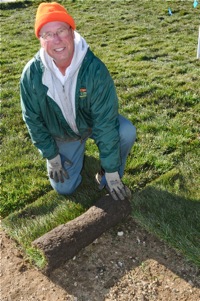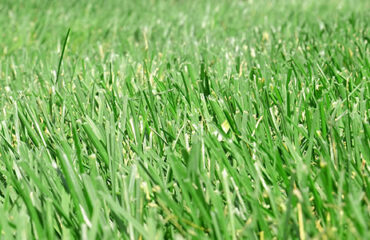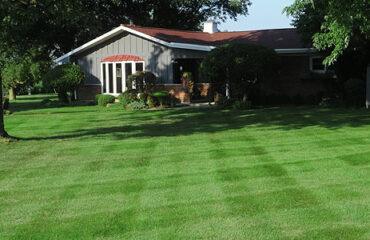You know, we don’t always plant the kind of seed that grows from the ground. Sometimes, it has to come from the mind, as well.
And it’s to that potential client that we share today, how you can address immediately the issues of your lawn, even as the ground becomes too cold for conventional grass seed to germinate.
Last week we wrote about fall “dormant” seeding, that which lies in the ground all winter and comes up in the spring.

Landscape manager Mark Eickhoff oversees a recent installation of residential sod.
But to those homeowners with bigger issues, like no lawn at all with a new home, or repairing lawn damage due to sewer lines or sidewalk replacement, sometimes it’s necessary to simply “install” that which you’ve lost. Fall is the perfect time to “sod”, rather than “seed”.
There are advantages to fall sodding. Cooler temperatures mean you don’t have to water every day. Plus, mother nature herself is pretty good about timely natural rains, which help new sod become rooted and tight to the ground.
You have immediate advantage of color, accent, and the elimination of mud when it’s wet, and dust and loss of topsoil when conditions are dry and windy.
But the greatest advantage of all is a green and growing lawn that’s weed-free and growing, come spring. No waiting for seed to germinate, mature, and fill in. No watering necessary, because roots systems have become established over the winter. Established turf “soaks” up spring rains. Bare ground leads to run-off, ruts, and subsequent repair.
The best news is you can lay sod anytime up to and before the ground freezes, a good thing to know if you’re tired of having mud tracked into the house by people and pets. And, it’s more cost efficient than you might think. Call it…planting a different seed for a better lawn.
Better yet…call Ever-Green!




